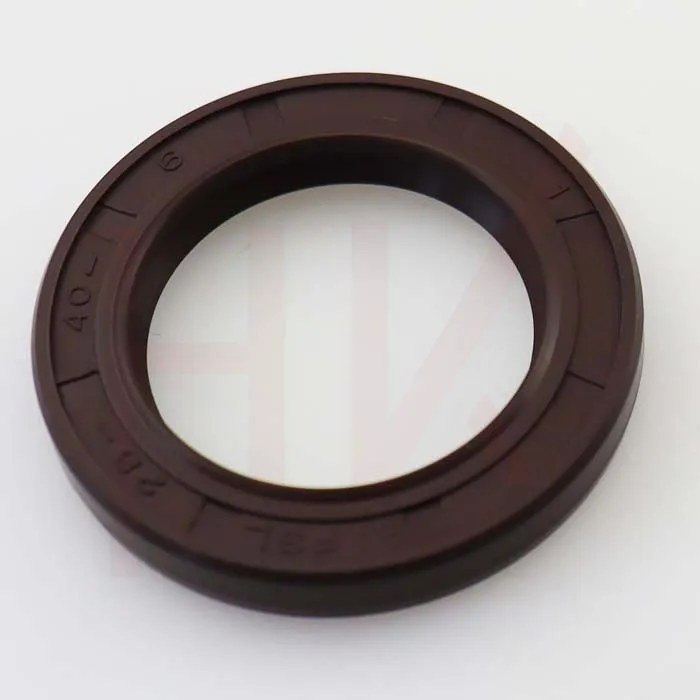Dec . 24, 2024 10:27 Back to list
pump seal kit replacement
Pump Seal Kit Replacement A Comprehensive Guide
The efficient operation of various machinery and equipment heavily relies on the proper functioning of pumps. Among the essential components that ensure this functionality is the pump seal. Over time, wear and tear can lead to leaks and other issues, necessitating a pump seal kit replacement. This article aims to provide a detailed understanding of pump seal kits, the importance of their timely replacement, and a step-by-step guide on how to perform the replacement.
Understanding Pump Seals
Pump seals are crucial in preventing the leakage of fluids within pumps. They serve as barriers, ensuring that the pumped substance remains contained, thus avoiding operational inefficiencies and environmental hazards. Seals can wear out due to several factors including heat, pressure, chemical corrosion, and mechanical wear. The failure of seals can result in leaks, which not only causes fluid loss but can also lead to equipment damage and safety hazards.
Importance of Timely Replacement
Replacing pump seal kits in a timely manner is vital for several reasons. First and foremost, it helps maintain the efficiency of the pump. Leaks can lead to reduced performance, escalating energy consumption, and increasing operational costs. Secondly, undetected leaks can cause damage to other components of machinery, resulting in more extensive repairs and greater downtime. Finally, safety risks increase with leaking fluids, especially when dealing with hazardous materials. Ensuring seals are in good condition is crucial for both safety and environmental compliance.
Signs That You Need to Replace Your Pump Seal Kit
1. Visible Leaks The most obvious sign is the presence of fluid pooling around the pump. If you notice any leaks, it is time to inspect the seals. 2. Decrease in Performance If you notice a drop in the pump's efficiency, reduced flow rates, or strange noises, it may indicate seal failure.
3. Increased Maintenance Frequent need for repairs or adjustments may suggest that the seals are not functioning correctly.
4. Unusual Odors If you detect undesirable smells around the pump area – especially with chemical fluids – this could indicate a leak.
Step-by-Step Guide to Replacing a Pump Seal Kit
pump seal kit replacement

1. Gather Required Tools and Materials Before starting, ensure you have the replacement seal kit, appropriate tools (wrenches, screwdrivers, etc.), a clean cloth, and safety gear (gloves and goggles).
2. Turn Off Power Supply Safety should always be the priority. Disconnect the pump from its power source.
3. Drain the Fluid Ensure all fluid is drained from the pump to avoid spills and ensure a clean workspace.
4. Disassemble the Pump Carefully remove any bolts or screws securing the pump cover, and take off the housing to expose the seals.
5. Remove Old Seals Carefully pry out the old seals using a flathead screwdriver or seal removal tool. Take care not to damage the pump’s internal components.
6. Clean the Housing Once the old seal is removed, clean the sealing surfaces with a cloth to remove any debris or old sealant.
7. Install New Seals Place the new seals into their respective grooves, ensuring they are evenly seated.
8. Reassemble the Pump Carefully reassemble all parts, making sure that everything is aligned correctly and securely tightened.
9. Reconnect and Test Once reassembly is complete, reconnect the power and run the pump to ensure everything is functioning as expected. Check for any additional leaks.
Conclusion
Replacing pump seal kits is an essential maintenance task that can significantly impact the performance of your pumps. By recognizing the signs of wear and following the proper replacement procedure, you can ensure your equipment operates efficiently and safely. Regular maintenance and timely replacements contribute to the longevity and reliability of your pumps, ultimately benefiting your operations and bottom line.
-
TCN Oil Seal Metal Ring Reinforcement for Heavy Machinery
NewsJul.25,2025
-
Rotary Lip Seal Spring-Loaded Design for High-Speed Applications
NewsJul.25,2025
-
Hydraulic Cylinder Seals Polyurethane Material for High-Impact Jobs
NewsJul.25,2025
-
High Pressure Oil Seal Polyurethane Coating Wear Resistance
NewsJul.25,2025
-
Dust Proof Seal Double Lip Design for Construction Equipment
NewsJul.25,2025
-
Hub Seal Polyurethane Wear Resistance in Agricultural Vehicles
NewsJul.25,2025
-
The Trans-formative Journey of Wheel Hub Oil Seals
NewsJun.06,2025
Products categories
















